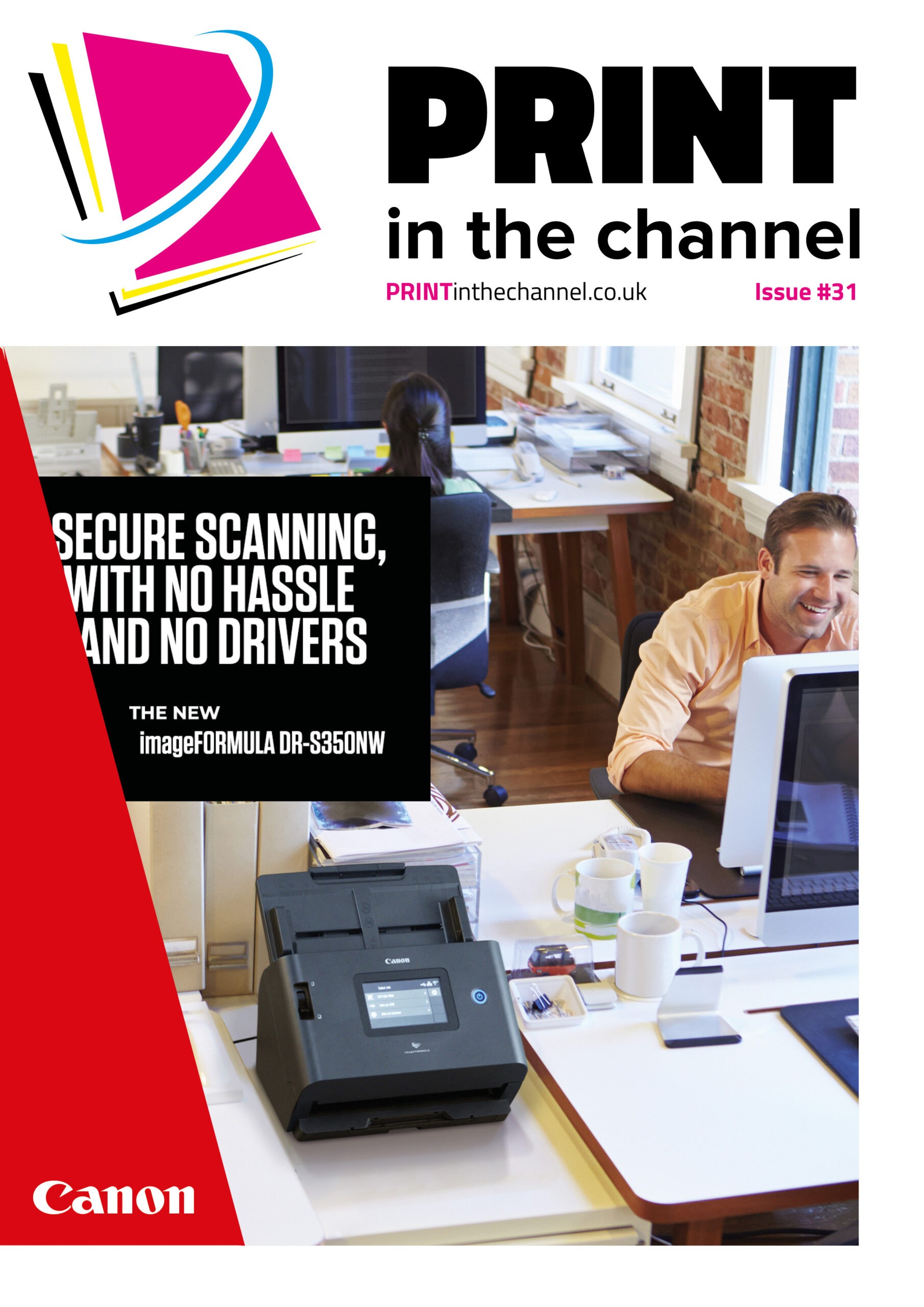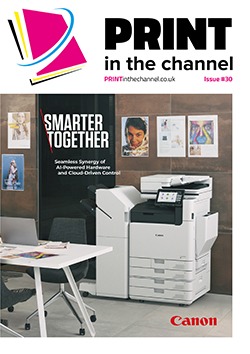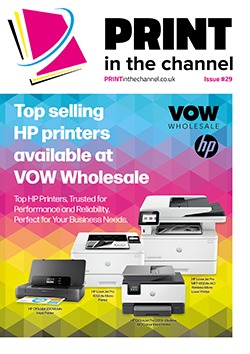The sustainability of printers is an increasing priority for many users, and manufacturers such as Epson are responding – not just with the printers they make, but how they are made and disposed of, as well as refining their own operations to reduce their impact on the environment.
Sustainability is an increasing priority for many businesses across the world. With growing scientific evidence pointing to a climate emergency, businesses – driven by increasingly stringent legislation, as well as demand from customers – are looking for ways to become more sustainable.
Printing and printers are part of that, and Epson, along with other manufacturers, is working hard for its customers to this end.
“If you look back 20 years, for example, there wasn’t much of an appetite for sustainability, it was an added extra but never a selling point,” says Taran Rai, corporate sustainability manager at Epson. “But things have changed. People are more clued up about the climate, about legislation coming in, and the desire to cut energy bills.”
With recent rises in energy costs, anything that can use less power is welcomed by businesses. “Energy consumption is a thing that you can control,” says Taran. “It’s an easy win too if you’re looking at decarbonisation. For a lot of businesses that are looking to change their printer fleet how much they could save on their energy bill because of changing to something like inkjet printing is really impactful. We’ve added a cost model to help customers understand how much money they could save by switching inkjet printing, for example.
“Sustainability has really come to the forefront, but what’s helped push it along is the economic side of things. People sometimes have this preconception that when it comes to sustainable products, there’s a premium added to them. But with something like this, you can see there is a saving because you are reducing energy consumption, therefore saving on your bills as well.”
Inkjet benefits
Epson printers can help to reduce energy consumption because they are inkjet rather than laser printers. “When you print off a piece of paper with a laser printer it’s warm to the touch. If you think about it, how hot does that printer have to be to make that piece of paper warm? That heating element means there’s a lot of energy consumption through that, whereas inkjet printing is a crystal-based technology: you run a current through a crystal, that crystal oscillates, and then essentially it ejects ink onto a page. That is where that sustainability really comes in, in that small amount of electricity you have running through those crystals. Also, you don’t have to wait for the heating process to happen with an inkjet printer so its faster.”
Taran cites the example of the University of Aberdeen. “They changed their printer fleet to inkjet and made a six-figure saving, which was very important for them,” she says.
“There are a lot of benefits to inkjet printing. The money one is often the one customers are drawn towards. When it comes to carbon savings as well, University of Aberdeen was able to save 87.5% of their carbon, too. That’s great for their sustainability manager and makes for a compelling argument.”
Refurbish and remanufacture
Two other areas that are becoming more important to the sustainability conversation for many businesses are the refurbishment and remanufacturing of devices. Remanufacturing is where a device is broken down then rebuilt with new parts, whereas refurbishment involves replacing old or broken parts and returning the device to a factory-like condition before putting it back into the market.
“We’ve established ourselves in the refurbishment market,” says Taran. “Currently, we sell our refurbished Eco-tank printers for consumers on eBay. They’re at a reduced price, but they’ve been tested and certified by Epson.
“Remanufacturing is a new space that we’re looking at because it plays into that circular economy. It’s not possible for us to have decarbonised completely without having a circular economy in place and how can we fit our printers into this?
“It’s about how can we make sure that when they’re built, they are modular enough for us to, at the end of their life, pull them apart easily and make sure all parts are recyclable.”
Reseller role
Resellers play an important role in Epson’s sustainability activities too. “Our resellers are super engaged when it comes to trying to understand how to put forward the product proposition with their customers,” says Taran. “Often, we’ll go with them to events they’re speaking at, for example. They lead but have Epson there to give any support if it is needed.
“Likewise, when resellers have customer visits, often they’ll call me and say ‘can you come along to the meetings because we have a customer who’s interested in sustainability.’ They’ll have their sustainability manager there and they want to talk shop, and I’m happy to do that.
“Resellers understand the basics of sustainability and the importance of it, but we can help tell the story of Epson and of inkjet printing as well. We ensure our resellers go through regular training as well to make sure that the information they have is up to date too.”
Recycling used printer cartridges is also important. Often, used cartridges have been binned after use and end up in landfill, which isn’t ideal as most parts don’t biodegrade. But Epson now has a cartridge recycling scheme for domestic and business consumers.
While domestic consumers have an envelope they can use to send used cartridges back, businesses can have a box that can be collected when full to save on time and deliveries, Taran explains.
Taran adds that Epson is also trialling refurbishing and refilling cartridges and putting them back into the market. “The idea is to have them used as much as possible, and again that helps with circularity and creating a loop,” she says. “It is trying to make sure that we’re heading in that direction and establish a foundation now so that it becomes easier in the future for us as well.”
Extended warranty
Another way to be more sustainable is for businesses to keep hold of their printers for longer. To this end, Epson has now instituted longer warranties on its printers. “It’s a bit of a no-brainer for customers,” says Taran. “When you’ve got such a long warranty for a product on offer, you’re going to get it because if in six years the printer breaks, for example, it’s still within warranty and will get fixed.”
Taran adds that another feature of inkjet printers is that, as it doesn’t have a heating element, the degradation in them is much lower. “We basically thought ‘let’s put our money where our mouth is and offer that long warranty,’” she adds. “It’s really helped customers because if we’re sure that products can last a long time, customers can rest assured that they don’t need to worry about their printer.”
Sustainability journey
Epson is continuing its efforts as a company to become more sustainable. For instance, in its logistics operation, rather than flying products from its factories in Asia to Europe, they are now being shipped, explains Taran. In addition, when products are being moved by truck, they are working with transport operators to optimise the number of pallets that can be fit into one trailer.
“That has made an impact on our carbon emissions, but obviously it’s not eliminating them,” she says. “It’s all about those little wins that you can get in from having these initiatives in place. They may seem like small changes in the first place, but they contribute to something bigger over time.”
Of course, this is an ongoing process. Taran emphasises that while Epson has made changes the company is constantly looking for other ways to be more sustainable – and it is a similar case with ensuring its products are too.
Building for the future
Building for the future is also important for Epson. “With the net zero targets for 2050 seeming so far in the distance, it’s so easy to just think about the here and now,” says Taran. “But a lot of businesses think about futureproofing too, so it begs the question, where in that conversation does sustainability come? Because fundamentally, the idea and definition of sustainability is to try to get a process working for as long as possible by itself without having to be supported or revamped.
“When it comes to sustainability, there is this preconception that it’s just about the environment, but it’s more about the business and how that’s going to survive and how you can get to that point. And that affects the whole business. Even if a manager says sustainability isn’t a priority, there’s probably a lot of things they are doing day-to-day that are sustainable priorities.”
Looking to the future, Taran says that Epson will continue to make its products more sustainable. Epson owns its print side from design to sales, which means if there is customer demand for a certain feature, or a gap in the market is spotted, they can react quickly.
There is also a lot of research and development at Epson going into new technologies, not just with printers but also with products such as paper and making that more recyclable. “But for the time being, inkjet is where our main strength lies, so that we can use that to try and help our customers achieve greater sustainability,” she says.










